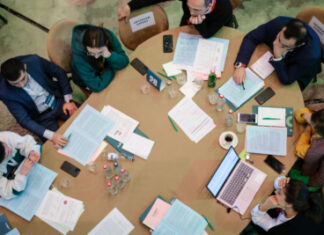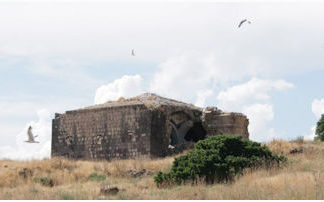By Muriel Mirak-Weissbach
Special to the Mirror-Spectator
BERLIN — At the same time that the Armenian artistic pavilion was receiving the Golden Lion at the Biennale in Venice this year, in Berlin two Armenian artists joined efforts to commemorate the victims of 1915 in an exhibition with a unique conceptual approach. Held in the ABAKUS Gallery from May 10 to June 20, the exhibition featured works by Vazgen Pahlavuni-Tadevosyan, known as VAZO, and Harutiun (Archi) Galentz.
VAZO was born in Gumri in 1955, studied at the Academy of Art in Yerevan (1972-74) and in Leningrad (1978-80). In 1998 he founded the International Biennale for Contemporary Art as a response to the earthquake in Gumri. He has exhibited in Armenia, Tehran, Paris, the Samara Biennale, Stuttgart, Strasburg and Berlin. He lives and works in France and Armenia.








